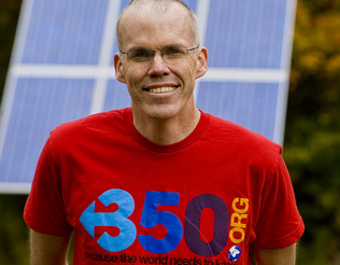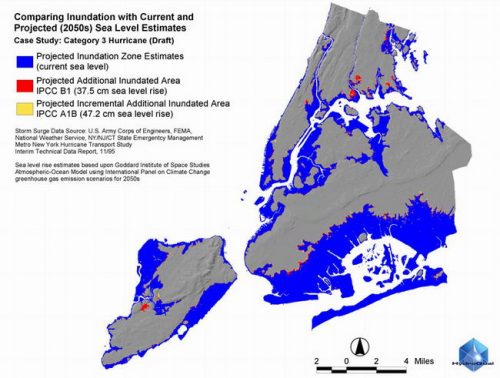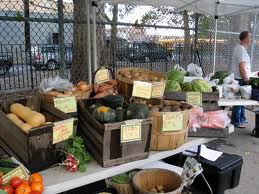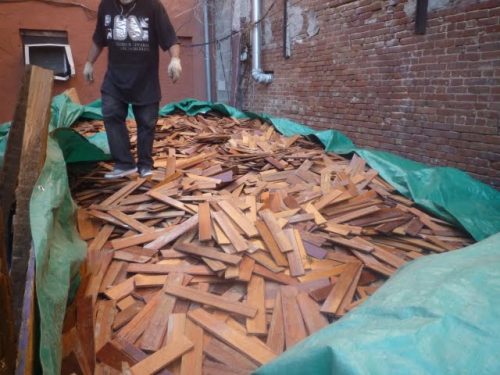When Eco- Brooklyn hands over a renovated brownstone to a client our goal is to do more than a renovation. Our hope is that the new structure will change the way the inhabitants impact the world. We do this through the way we actually carry out the renovations a well as how the home is built.
City infrastructure changes through our renovations, paired with consumer and personal behavior changes as they interact differently to their home, and the closed loop economic practices during the construction (like the use of salvaged materials), all help to eliminate negative environmental impact.
We all know the developed world currently lives in a society of excess. We consume too much water, too much energy, and too much food. We produce too much pollution, too much trash, and way too many people than our world can handle.
People are not going to willingly give up the capitalist culture that they have grown fat in. From the mainstream media you could think there is a consensus that the free market democratic system is the best way to achieve optimum utilitarianism. And the striving for growth of consumer culture all around the world in places such as Egypt, Sudan, and Indonesia confirms that the American way of life is being adopted all around the world.
But there is a large group who are looking for alternatives to this excess. For example, Bill McKibben, author of Eaarth: Making a Life on a Tough New Planet and founder of 350.org, organized the largest ever global coordinated rally of any kind, with 5,200 simultaneous demonstrations in 181 countries, rallying a global movement to solve the climate crisis.

Despite these efforts, rapid consumer consumption and globalization are rampaging on. Not only are first world countries demanding bigger houses, nicer cars, and more stuff, but the whole world is too.
Or at least this is the main push, and has been for decades
But that era is slowing down due to environmental and economic hurdles.
American homes are not getting increasingly bigger any more. Over the last couple years people simply can’t afford them and even large builders are holding steady or even reducing home sizes.
Regardless of the reasons, these movements are all a step in the right direction.
I believe that the excess that we see today is slowing and will continue to do so because of political, economic, and natural disasters, slowing excess through force.
Until that really comes to a head, currently we have many companies creating business procedures that are trying to address our environmental problems now, but they are pretty shallow, arguably simply for the company’s image, and very small when compared to the larger picture.
There are three main facets in this corporate “greening”. The facets are mostly in the beginning stages of their development and need to be put into overdrive in order for us to really have an impact.
But for now it is at least a movement in the right direction, a bridge between the excesses of today and the sustainable future of tomorrow.

Behavior Change Campaigns
The most popular tool that companies use to change consumer behavior is campaigns. In 2010, consumer goods giant Procter and Gamble set itself an ambitious goal: by 2020, 70% of their washing machines worldwide will be done in cold water. The same year, Procter and Gamble implemented the “Turn to 30 Campaign”, which encouraged consumers of their product, and even consumers of other washing machines to reduce their washing temperature to 30C.
At 30C, a per-wash energy saving of up to 60% could be achieved. The Turn to 30 Campaign set out to persuade consumers through print, television, and other media channels that not only would they benefit from energy savings, but they would not have to compromise on the cleanliness of their clothes.
To a typical consumer this might seem like a good idea and a very ethical thing for such a large company to pursue. While Proctor and Gamble has good intentions, this campaign is insignificant when compared on a large scale. Procter and Gamble is just one producer of washing machines out of dozens in the United States, and hundreds worldwide.
In addition, companies like Procter and Gamble churn out consumer products that are extremely expendable and have planned obsolescence periods of 3 to 4 years. Once these products complete their useful lives they usually get down-cycled or thrown into a landfill. These products are also filled with dangerous chemicals such as PVC plastic.
The Power of Consumer Choice
I believe that the power of consumer choice is the most compelling economic tool when trying to achieve sustainable development. If consumers continuously pick the companies and products that are environmentally responsible, then they will prosper, augmenting further growth and responsibility. Consequently, companies that are not following such trends will suffer and ultimately fail.
Currently, the power of consumer choice is being executed on a small scale. Consumers that are willing to pay higher prices for eco-friendly products are doing so. In addition, local, organic food co-operatives are becoming extremely popular alternative to going to the regular supermarket that provides less healthier choices.
But in order to achieve any sort of success, consumer choice campaigns have to be implemented on an extremely large scale, and those that do not acquiesce are going to be forced to change because our environment is going to force them to do so. In order to have a thriving economy we need a multitude of local shops that specialize in selling particular local goods. This will promote community and foster sustainable development through wages.
Consumers also need to face the fact that they are not going to enjoy the luxuries that they are currently accustomed to. Environmental constrictions will force us have less, and do more with less.

Product Efficiency and Infrastructure Change
If companies progressively improve their products so that they consume less resources, require less energy to produce, and create less waste, while not changing the price, consumers will happily buy in.
Product efficiency can be achieved through intense analysis of the production process, and market research. There is still plenty of room for improvement weather it be automobile, construction materials, or furniture.
A way to improve product efficiency to require less energy is infrastructure change. Creating factories and stores that are extremely energy efficient and utilize renewable energy sources can mitigate the environmental and carbon footprint of the product produced. But again, this needs to happen on a much larger scale than what it is occurring at right now.
At Eco-Brooklyn we believe that we are a small part of the mosaic that can help solve this problem. Within the Brooklyn Area, Eco-Brooklyn has renovated multiple retail stores including this one.
Closed Loop Systems
Most of the consumer products that we buy today suffer the same economic system fate: cradle-to-grave. This means that fresh resources are extracted from our Earth, made into a product, used, and then thrown out in a “grave” (i.e. landfill).
Cradle-to-cradle design, on the other hand offers a framework in which the effective, regenerative cycles of nature provide models for positive human designs. Just as in the natural world, in which one organisms waste cycles through an ecosystem to provide sustenance for other living things, cradle-to-cradle materials circulated in closed-loop cycles, providing nutrients for nature or industry. Essentially, cradle-to-cradle recycles old products to create new products, such as the use of old sneakers to make rubber tennis courts, or recycled plastic bottles to make t-shirts.
As a small but important part of the large economic flow of goods, Eco-Brooklyn uses the cradle-to-cradle method by using disguarded construction materials in all of our work. As a New York green contractor, we believe that the city has everything we need via dumpsters, other job sites, and throwaways. Instead of buying materials that use up virgin resources we presume that the resources we need are just around the corner.

The Future
The aforementioned ideas need transform from small to large scale projects which will perpetuate us into a paradigm shift toward a ‘green’ economy. We have to realize the power that each individual consumer and company can have on the market. In theory consumers drive the markets and if consumers can begin to change then our economy will transition into a green and sustainable future.
The truth is this has never happened on a mass scale so who is to say that it is realistic. The system, where it is legal to be greedy as along are you can afford it is not conducive to rational consumer though. Which brings us back to shifting towards a green economy through choice but simply because we can not afford to consume like we used to.
This will not happen smoothly though, there will be people that are not willing to change their accustomed way of life. This will regrettably lead to social and political conflict. In the end, ecological disaster will be the motivation that kicks humanity into a drive to change the way that we live. The future is not all bad though. The new world that we will eventually live in will bring us back to find out roots and things that are important in life such as community, family, and friends. We increasingly need those things simply to get by.
